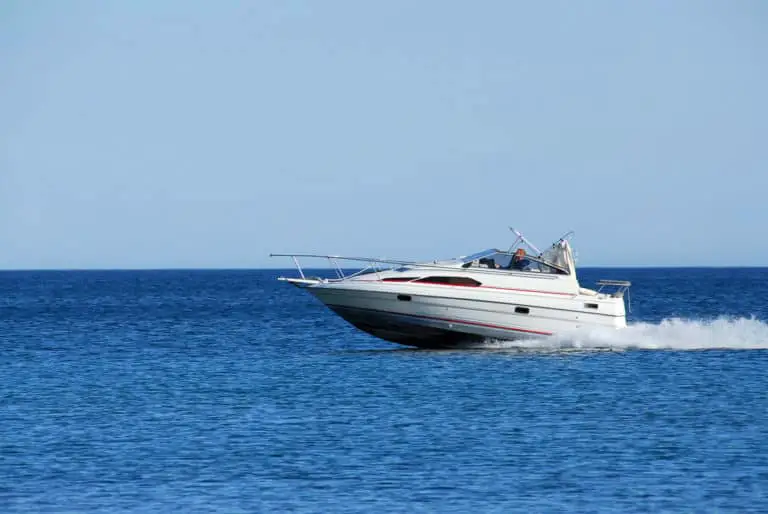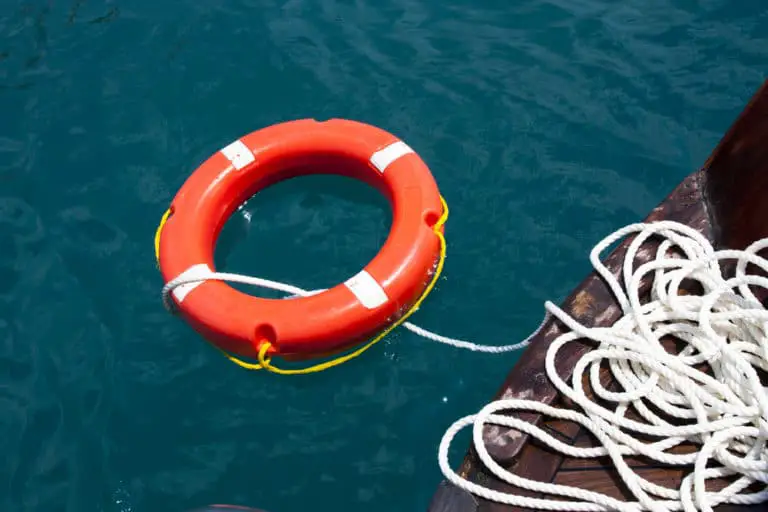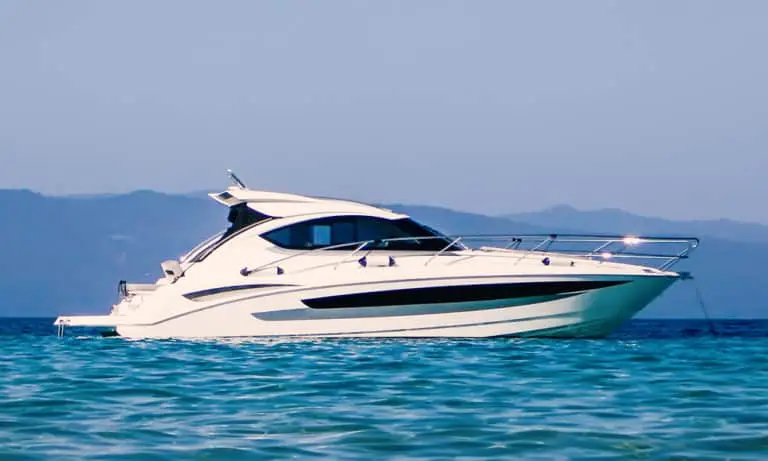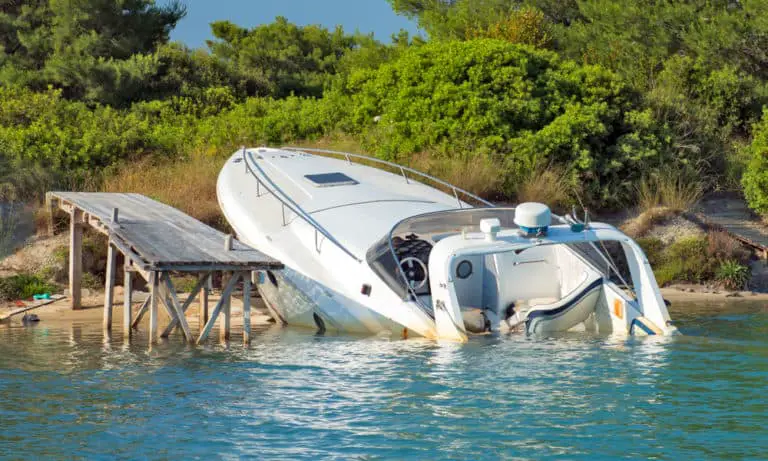Boat Maintenance: The Definitive Guide (2025)
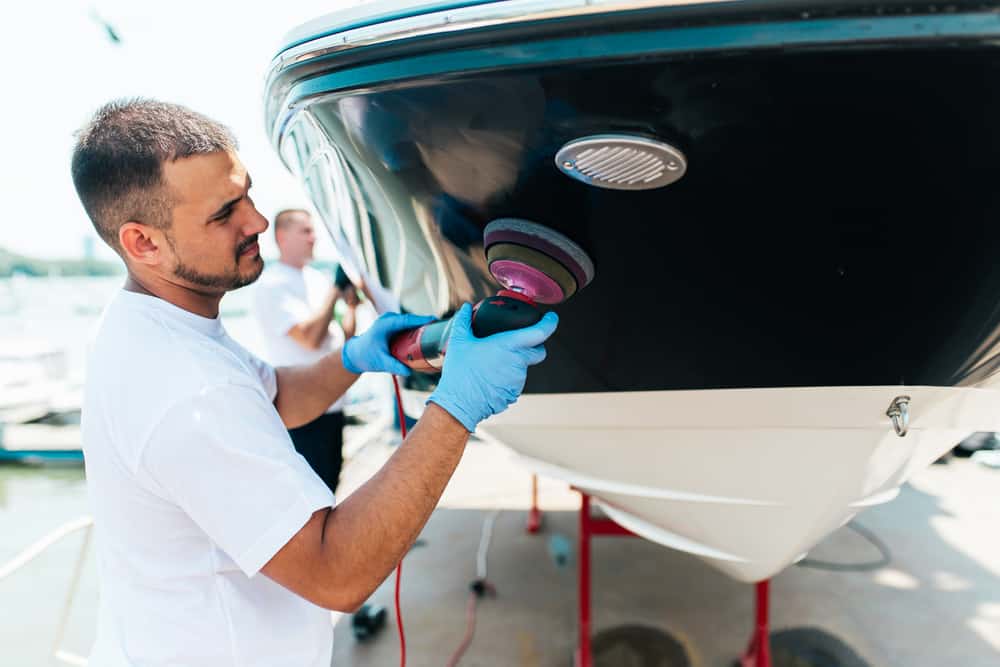
Many new boat owners are a little intimidated by the thought of the boat maintenance that they need to do. At first glance, there may seem like a lot to remember, but it can be broken down into much more manageable schedules, just like you would do for your land vehicle. This article will help make it easier to handle.
- Check Before Every Outing
- Check After Every Outing
- Check At Regular Intervals
- Check Once a Year
- Cost of Boat Maintenance
Boat Maintenance
In the simplest sense, boat maintenance or boat care is keeping your boat in a clean and ready-to-operate state. It doesn’t mean doing one particular thing, but rather a continuous level of care, like you may use for a truck or a house.
There will certainly be aspects of boat care that you should do every time you come out of the water, like washing your boat, but there will also be some items on your maintenance list that will only need to be done seasonally, or even yearly. There are even some tasks that you will be doing on every single outing in your boat.
Check Before Every Outing
Every safely operated vessel should have a pre-departure boat maintenance checklist of things that need to be checked before each and every trip on the water. These are things that are generally related to basic mechanical functionality and essential safety items.
While these boat care tips are meant to help and give examples, they should by no means be considered complete and final lists of all needed maintenance.
Engine Oil Levels
One of the most important aspects of caring for your boat is proper boat engine maintenance. It will often be operating for periods of time at very high revolutions per minute, so it needs to be properly lubricated. Most larger boat engines are 4-cycle, meaning their engine oil is separate from the fuel. In smaller 2-cycle motors, however, the oil is combined with the gas.
If you need to do some boat motor maintenance, checking your oil is going to be the first step, here’s how:
- Remove the cowl from the engine, exposing the dipstick, often with a bright yellow handle.
- Remove the dipstick and wipe it clean with a rag or towel, then reinsert it into the tube.
- Remove the dipstick and evaluate the oil level, replacing it when finished and adding oil as needed.
Battery and Battery Cables
The next items on your boat service list should be to check the condition of your battery, as well as the connecting cables. Batteries can lose their ability to retain a charge, over time. The cables that connect the battery to the boat’s electrical system are also important to keep in good shape. Most batteries should be good for 2-5 years, depending on the quality purchased.
This can be a particularly important maintenance item for those who need to perform saltwater boat maintenance since the salt environment will cause connections and cabling to corrode and degrade quicker than in freshwater environments.
Propeller
Making sure that the prop is in good shape before launching is another vital step and for outboard motor maintenance a simple one at that. First do a visual inspection, making sure that there is no damage to the blades or housing. Damage can occur from cavitation, salt content, normal wear & tear, or collisions and running aground.
Another thing to add to your maintenance checklist after the visual inspection of the propeller is to make sure that it is secured tightly and that the shaft is adequately greased. This isn’t something you will need to do each outing, but a few times per season should be plenty. This will also give you a chance to get rid of any debris that is wrapped around the prop shaft.
Safety Gear
Part of adhering to a boat maintenance schedule is making sure that before every outing, you have the proper safety gear and sufficient emergency equipment for the passengers that will be on your vessel. As the boat operator, it is your responsibility to keep them safe and to operate your boat in observance of all laws.
Common pieces of safety gear that should be part of your boat loadout include:
- Personal floatation devices in the correct number and rating for your passengers
- Throwable floatation devices, like a ring buoy or a seat cushion
- Fire extinguishers. Depending on boat size, you may be required to have several varying types
- Signaling devices, flags, whistles, flares, and so on
- First-aid kit
- VHF 2-way radio
- Running lights if there is a chance of operation after dark
Check After Every Outing
Now we’ll take a look at some boat maintenance tips for what to do after your time on the water. This may not necessarily be daily, but if you’re out for the weekend, this would be what you check before trailering home your boat for the week.
After Saltwater Trip Flush the Engine
This is a crucial bit of marine maintenance and one of the most important things that you can do to protect your engine from damage if you operate it in a saltwater environment. Flushing the engine uses freshwater to flush all of the sal deposits out of the engine to prevent corrosion and damage.
Be sure you never operate your engine without a water supply in place and be sure to consult your owner’s manual for your engine’s procedure. Often, this step is as simple as connecting a hose to the engine and running it for a few minutes to clear the coolant channels, then rinsing the rest of the components before allowing the engine to dry. You’ll be doing some boat washing anyway, might as well make sure your engine gets a bath.
Visual Inspection
After each outing, it is important to perform a visual inspection of all general mechanical and structural elements before storing the boat. This will allow you to take inventory of any issues that need to be addressed before the boat next hits the water. If any repairs or other service is needed, you can make a determination of whether you will take care of it or bring it to a marine repair shop.
Items to check after each outing might include:
- Engine cowl and lower unit condition
- Prop condition
- Indications of wear on gas or electrical connections
- Battery condition
- Bilge pump
- Signs of damage or deterioration to the hull, deck, or sides
Washing and Waxing
This stage is incredibly important and many first-time boat owners frequently neglect it. Many owners erroneously assume that if the boat is in the water all day, it doesn’t need to be washed very often. Washing your boat helps to remove the number of waterborne contaminants like algae, mussels, salt, and more.
Waxing will help you reduce your overall Boat maintenance cost by helping to protect your hull against UV and other damage. The wax provides a barrier that helps to block harmful UV rays that cause paint to fade, materials to become brittle and delicate and diminish the overall look of your vessel. This is all the more important for saltwater vessels that may see much less time in protective storage.
Clean Your Boat Seats
Cleaning your boat seats is often a relatively easy part of your boat repair and maintenance duties, and can be done with the post-use freshwater rinse.
It is important to wash the vinyl seats present on most boats, to reduce the number of contaminants on them and to ensure that they are cleaned and protected against UV rays.
When giving your vessel its freshwater bath, get a bucket full of water, add some standard dish soap, or one of the many boat cleaners that are safe for vinyl, and soap them up like you would anything else. Rinse thoroughly and your seats are ready for another trip out.
Proper Storing
Storing your boat is very likely the absolute worst part of owning a boat because, simply, who wants to put that thing in storage?! We’d all much rather be boating, but from a practical standpoint, nearly every boater’s trip comes to an end, and how you store your boat in the time between outings can impact it just as much as how you treat it on the water.
Be sure you store it outside of the reach of UV rays. It gets enough of those on the water, so if you store your craft outside, make sure your boat is well covered. Make sure you visit a boat repair service if needed, for repairs you need to before storing your boat. Nothing guarantees you’ll forget something you need to fix, like setting it out of sight and out of mind for weeks or months at a time.
Check At Regular Intervals
Maintenance that you’ll need to perform at regular intervals won’t necessarily need to be done each outing. For things on this list, track your time on the water and make room in your maintenance schedule between 50 and 100 hours on the water. For busy boaters, for example, these might be done monthly.
Engine(s)
Regular maintenance for your engine will be measures aimed at increasing the longevity of the engine. These will often be things that can help your engine run more efficiently or things that will prevent more expensive visits to the local boat mechanic. Much of this the average boat owner can perform, while some might be more comfortable having a mechanic take care of everything.
Engine maintenance at regular intervals will include:
- Decarbonizing treatment
- Checking the engine for accurate RPM readings
- Check the engine mounts for wear or damage, and ensure the mounts are all tightened to spec
- Check the fuel lines for wear or damage
- Water impeller replacement
- Inspection by a professional boat mechanic
Oil and Oil Filter Change
The oil and filter change needs to be done at regular intervals before they lose their protective abilities, just like in a car. Oil changes on most outboard engines will be easy enough for the average boat owner, while inboard or hydro-jet engines are best serviced by shops or marinas specializing in inboard boat repairs. Making sure you keep the oil fresh with regular changes will extend the life of your engine, and minimize the chances of catastrophic failures.
Bilge Pump
Having the bilge pump inspected and serviced if needed is something that should be done at least seasonally, if not at regular 100-200 hour intervals. Many bilge pumps are automatically activated once the boat is on, so the owners may not necessarily be aware of how much it runs. Making sure the bilge pump is working well ensures that your boat can keep its buoyancy by keeping water out of the boat.
Steering System
Having your steering system inspected a few times a year can ensure that you are never left stranded on the water without maneuverability, or worse, lose control at a crucial moment and have a collision.
Whether you’re doing powerboat or sailboat maintenance, ensuring that the steering system is operational and functioning as intended is vital to personal, passenger, and boat safety. Be sure your boat maintenance professional checks:
- Steering linkages and hydraulics if equipped
- Engine trim and tilt system
- Be sure the fluid level is adequate and there are no leaks
- Lubricate any fittings that may be needed
Hull and Topsides
You should be periodically checking both the topsides and your hull for signs of deterioration or damage. This is something that I would personally do after each weekend at the lake, while I was washing her off Sunday afternoon or evening. Twice a year I would have the hull professionally inspected as well, to ensure that there was nothing I was missing.
This includes not just the hull and topsides, but also the rub rails since they will likely get more impacts than the hull. This inspection makes sure that your hull is still seaworthy and that there are no developing failures that could cause the boat to potentially sink.
Electrical Systems
Periodically you should not only check the overall functionality of your electrical systems, particularly the functions you don’t regularly use, but you should also inspect them thoroughly. This includes your nighttime running lights, especially if you only run during the day.
Electrical Lines
Check wire and insulation conditions, and spot-check wires with a multimeter to verify connectivity. Make sure everything that you can reasonably access is in good condition. You don’t need to pull the boat apart, but be thorough. This should be done about every 100-200 hours, or about twice a year for most people.
Other Fluid Levels
Make sure that you are not neglecting any of your fluids since oil usually gets the most press. Be sure that you are checking on your hydraulic fluid, since your steering and trim systems may rely on that.
Battery
You will go through batteries as a boat owner, it’s just a fact of life. Even though you should be using an automatic tender for the off-season, giving your battery a good diagnostic every 100 hours or so goes a long way toward seeing a problem coming down the road. Check the ability to both absorb and hold a charge, as well as the voltage.
Trim Tabs
Trim tabs are important for larger boats with more powerful engines. Be sure you have them inspected about every 100 hours on the water. The inspection should cover their condition as well as the hydraulic system or mechanical system used to adjust them.
Propeller and Propshaft
While you have been regularly checking your prop before and after use, about twice a year you will want to not only have the prop professionally inspected and likely replaced, but the propshaft inspected as well. This ensures that your propshaft is properly greased and balanced, to eliminate harmonic damage and wasted fuel.
Clean the Interior
Really give your boat a good scrub down and interior cleaning about every month worth of weekends on the water. Get rid of any trash you’ve stashed in compartments, and clean it top to bottom. This keeps your deck in good condition, as well as your carpeting if so equipped, and gives a little extra insurance against things like mildew and mold, and pests.
Boat trailer maintenance
If you trailer your boat, make sure that your trailer is in impeccable condition. This includes things like making sure the axle is greased and in good condition, as well as the tires, including the spare. Double-check the hitch, cabling, and connectors, as well as the brakes if equipped.
If you live in a state that requires trailers to be registered, make sure you have gotten the appropriate proof if traveling. If you’re heading out for the weekend, the last thing you want on your way to the boat launch is a flat or worse, a ticket.
Once a Year
There are several tasks that should comprise your annual boat maintenance checklist. These are maintenance tasks that are often heavily centered around either getting on the water for the first time that season or closing out the season and getting ready for storage in the off-season. Either way, there are specific things you should pay close attention to.
Spring Start-up
When it comes to getting ready to head out on the water for the first time after the weather warms up, there are several annual boat maintenance tasks you should do to ensure you and all passengers on your boat are going to be safe and have fun out on the water.
Some important parts of your spring boat maintenance include:
- Inspecting your fuel system for damage or leaks (especially connections, hoses, and tank surfaces)
- Check hoses, cables, and belts
- Inspect your electrical connections, everything should be tight and free of corrosion
- Check fluid levels and refill accordingly
- Change the oil, lubricants, and oil filter
- Inspect the exterior of the boat for damage, especially propellers
- Ensure you have all safety gear, including life jackets and fire extinguishers
- All semi-enclosed or fully enclosed areas must have at least 1 working carbon monoxide detector installed
- Take advantage of USCG, USCG Auxiliary, or US Power Squadrons safety inspections
Winterizing
Each year before temperatures drop below freezing, any boat stored in a cold climate needs to have its cooling system winterized. This process flushes the entire cooling system with antifreeze, removing all of the freshwater. If left in there, water will freeze and can cause damage to your boat’s engine. Even boats that have a closed cooling system should be flushed just in case.
In addition to flushing with antifreeze, you should also ensure that all other areas that hold water are empty, including livewells and pumps. Freeze damage isn’t the only concern, as corrosion and mildew can be a problem, too. You can certainly winterize your boat yourself, but having it done at a shop as a part of your annual service will save you the time and trouble, as it can be a tricky task. You do not want to miss something and risk damaging your boat.
Cost of Boat Maintenance
There is a lot of fear surrounding the annual maintenance prices and costs for potentially owning a boat. The fear is largely unfounded, however, as the yearly cost of maintenance and upkeep for a boat is in most cases, less than a tenth of its purchase price per year.
So if your boat costs around $100k, you should be prepared for around $10k per year in maintenance. Though in the first years of ownership of a new vessel, repair costs are often minimal, so this projection can even be inaccurately high in some cases.
DIY vs. Boat Service
Many people wonder if there is any benefit to performing all of your boat maintenance and repairs yourself or utilizing a shop or marina that already has all of the appropriate boat repair supplies.
In the end, the difference is negligible, whether you own a small craft or a large one. Either way, you’ll be investing money in your vessel, many people choose to simply let the shop do it, for ease and speed.
FAQ
What maintenance does a boat need?
It is important to keep the hull clean, keep an eye on fluid levels, and have your boat serviced regularly to keep your boat healthy.
How often do boats need maintenance?
Keeping your boat in its best shape includes regularly servicing the engine and fixing problems ASAP. A boat maintenance log can help keep track of services.
How do you maintain a boat?
Maintaining your boat includes regularly inspecting your boat for problems and low fluid levels, as well as replacing spark plugs and repairing damaged parts.
Are boats high maintenance?
Boats aren’t much more high maintenance than vehicles. With regular boat tune-up services, you should be able to keep your boat running for years.
How much is boat insurance a month?
An annual policy usually costs between $300 and $500, so you can expect to spend anywhere from $25 – $42 per month on your boat insurance.
How many hours on a boat engine is a lot?
When maintained well, boats can last a long time. On average, though, you can expect to get 1500 to 2000 hours out of an engine.
Why should a boat’s gas tank never be completely filled?
Filling your boat’s gas tank beyond 90% full is not recommended because it doesn’t allow space for gas to expand, which can lead to overflow.
How much does it cost to service a boat?
On average, most boat owners should expect to spend $400-$500 on routine engine servicing. This service is generally performed on an annual basis.
Can I leave my boat in saltwater?
Boating in the ocean can be fun, but you should not store your boat in saltwater for more than a week at a time.
How often should a boat engine be serviced?
To keep your boat running smoothly, you should take it in for marine boat service once every 100 hours or every 12 months, whichever comes first.
How do I prepare my boat for spring?
Every spring, your maintenance plan should include having the engine looked over and ensuring all of your safety equipment is on board and in proper working order.
How do you maintain a boat hull?
Your boat’s hull should be cleaned several times per year. You can do this yourself on land or hire a professional boat services technician that can clean underwater.

